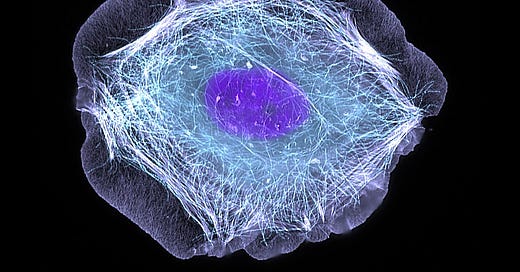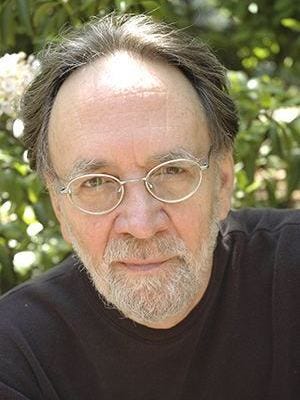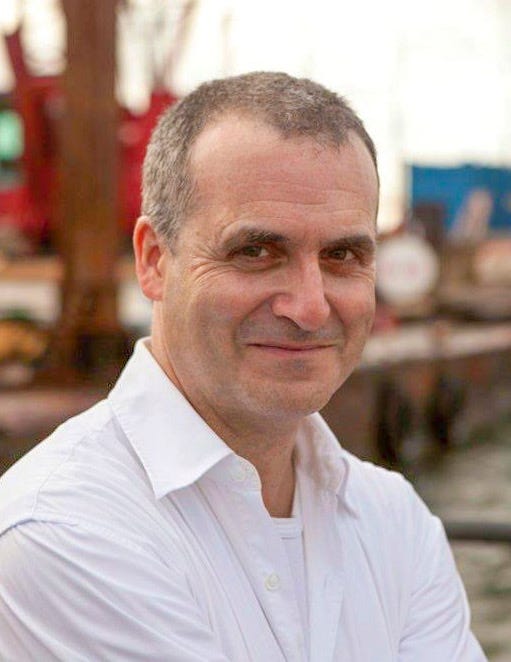The Unexpected Comeback of the Conscious Universe - Pt. II
Matter, sentience, and the mystery of life
In the last post, I describe why and how old metaphysical speculations about the nature of consciousness in its individual and universal manifestation, such as panpsychism, are experiencing a revival. The failure of neuroscience centered on a materialistic and reductionist perspective, in furnishing any explanation for the emergence of sentient life, led some scientists and philosophers of mind to give a post-material worldview a chance.
For similar reasons, while a strictly materialistic, reductionist, and gene-centric view of life allowed biology to describe in great detail the machinery of life, it failed to account for the origin and nature of its agency, the purposeful-driven, volitional, and cognitive aspect, and, at least in complex organisms, the emergence of consciousness, mind and in its emotional, and experiential dimension as well. When it comes to these deeper philosophical and existential questions, biology hasn’t made much of progress since its inception centuries ago. Here also, scientists and philosophers begin to take a different view.
In this regard, I deem the “cellular basis of consciousness model” of A.S. Reber, and “biopsychism” of E. Thompson, interesting speculations that are worth mentioning.
However, as a preamble, it might also be interesting to point out a curious paradox. Reber, is not at all sympathetic to a post-material paradigm and, to the contrary, is a militant skeptic battling psi claims—that is, so-called paranormal phenomena. Reber became especially known when he, with his colleague J.E. Alcock, castigated a review on the experimental evidence for parapsychological phenomena published in the American Psychologist journal, openly declaring that it “cannot be true,” has “no existential value,” and argued for the physical “impossibility of the existence of psi phenomena.” Their strong rebuttal would be worth an analysis that highlights its lack of logical and scientific coherence with some few observations where they got it right and is, perhaps, even more interesting from a sociological aspect (maybe I will do so in a future post.) I doubt that Reber would agree with my choice to place his theory into the list of post-material speculations. Yet, it is interesting to see how something suggested him to look beyond, even though remaining unable to break free from the orthodox cultural thought patterns. It reminds me of Kepler who rightly saw through the data that led him to formulate his famous three laws of celestial mechanics but remained unable to explain it other than resorting to a weird theory of platonic solids. The new heliocentric paradigm was felt to be true but the real scientific understanding was still lingering in a subliminal limbo. I feel Reber’s model brings to the surface something having roots in a deeper truth, even though firmly anchored in materialism (replacing platonic solids with other high-sounding concepts having only seemingly a grandiose explanatory power, such as ‘non-linear self-organizing complexity,’ self-referential processes,’ ‘integrated cellular information fields,’ ‘conjoining information architectural matrixes,’ etc.)
On a similar line of reasoning, I would place Thompson’s biopsychism. However, to the contrary of Reber, Thompson’s background has a more contemplative root in Buddhism. Yet, IMO, Thompson also fails to go much beyond a conventional materialistic perspective. I will describe the reasons for this in greater detail later when making a critical assessment looking upon all the models. But, to put it bluntly, he starts from a deep intuition (all life is sentient and minded, even single cells) but then falls back to a phenomenological approach (“enactivism,” which also plays with words such as ‘enactive,’ ‘extended-, embodied-, or distributed cognition,’ ‘interoceptive and exteroceptive body representations,’ etc.) It doesn’t go much beyond the usual theories of self-organizing complexity, and that, so I believe, are a dead end if we want to account for the ineffable aspects of life, such as consciousness, mind, emotions, will, agency, etc.
Nevertheless, this doesn’t mean that these speculations are of no value. If I highlight them here it is precisely because, contrary to their present intent, they might open the way to a view, a way of seeing and looking upon the world and life, that transcends the straitjacke of materialism.
The Cellular Basis of Consciousness Model
Whether unicellular forms of life can be considered conscious in the sense of having some form of a sentient experience is something hard to establish given the inherently subjective nature of consciousness. Nevertheless, the evidence of cellular intelligence prompted hypotheses regarding the cellular origin of consciousness as well. Noteworthy is the ‘Cellular Basis of Consciousness’ (CBC) model, championed by American cognitive psychologist, Arthur S. Reber, which challenges the assumption that subjective awareness emerged late in evolution.
Conscious experience may already appear in cellular form, co-terminus with life. Processes taking place in excitable cellular membranes may lead to a basal form of proto-consciousness with intentional and cognitive capacities. In this theoretical framework, the plasma membrane, together with the nuclear envelope and the internal cellular complex, are seen as the two different ‘nanobrains’ generating a ‘cellular self’ with a purposive agency. In this view, individual cells maintain their identity by measuring information of the outside world to sustain a self-referential homeostatic equipoise in reaction to the external environment. A self-referential awareness that is self-organization, and in which every cell embodies an elemental cognition. From this perspective, one could conceive of a ‘Cognition Based Evolution’ (CBE), complementing Darwinian natural selection processes, in which receptive intelligent cells measure the environment–that is, assess information–and consequently learn and react to uphold self-identity. In a sense, life could be seen as a ‘continuous measurement of information’. For a thought-provoking summary of the CBC theory, see also his book.
The CBC model and the CBE theory place biological development and morphogenesis in terms of an information architecture. The multicellular organism is considered beyond the material aggregation of material units: It is a whole complexity of a communicative assembly of cells seen as an integrated cellular information field. Individual cellular information fields aggregate into an architectural matrix that enables organism-wide information management ( link, link, link). From this perspective, multicellularity is collaborative cellular management directed towards the optimization of information quality through its collective (internal and external) measured assessments. The biological organization represents a dual heritable system: It constitutes a biological materiality and also a conjoining information architectural matrix, with morphogenesis deriving from the reciprocations between these two inter-related facets and thereby yielding coordinated multicellular growth and development. Hence, an information architecture could serve as a morphogenetic template. This could be deemed a natural bridge between vitalist concepts and physical/energetic realities. The logic is that in the cognitive frame, information is physical, not ethereal.
Biopsychism
Evan Thompson, a philosopher at the University of British Columbia, Vancouver, followed a similar line of argument introducing the idea of ‘biopsychism’ (a term borrowed from the German zoologist and philosopher Ernst Haeckel).
It is the idea that all biological life, even a single-cell organism, is always sentient or minded—that is, conscious and capable of feeling. Biopsychism distinguishes itself from panpsychism insofar as the first form of phenomenal experience does not arise in elementary particles, atoms, or molecules; rather, it is an exclusive property of life. Thompson was inspired by the theory of ‘autopoiesis’ (from Greek: ‘auto’ = ’self’, ‘poiesis’ = ’production’) of Chilean biologists Humberto Maturana and Francisco Varela. An autopoietic system is a metabolic system capable of self-reproducing itself and self-maintaining its parts and is adaptively regulating its interaction with the environment. Every autopoietic system is already incipient in mind, and mind belongs inseparably to life. For biopsychism, feeling is a vital ability of all organisms. Every form of individuality and agency so instantiated becomes sentient. That is, life regulation processes determine the feeling of being alive with an experience of bodily existence. It is the self-individuating dynamics that put every organism into an interactive engagement with the environment and of which the bacterial cell is the most elementary example.
The question is how and why such a cybernetic system—that is, a unit defined by its internal recursively interacting networks (think of the complex molecular signaling pathways and biochemical activities inside a cell)—however complex it might be, can interact and modulate its engagement with the environment to enhance its vitality or flourishing or to gain some advantage, without having some motivation. There is a missing link between a purely mechanical system that strives for its survival and behaves by seemingly goal-driven volition, and that is nevertheless supposed to have no volition, feeling, sentience, or affection of some sort.
This motivates the biopsychist to bridge this gap by admitting that sentience is a necessary ingredient that must arise once such a self-regulating, self-reproducing, and adaptive system comes into being. Once something becomes a self-individuating, self-reproducing, and self-delimiting system, it automatically must acquire some form of consciousness, feeling, or mentality. The difference between the functionalist approach and the biopsychist one is that the latter does not consider functionality to determine a conscious experience; rather, it is the organizational and structural dynamics of the system.
The biopsychist contends that this could also suggest a way out of the combination problem. Sentience emerges only in bound and self-individuating subjects—something that a particle, an atom, or a molecule is not, but living cells are. In general, every boundary-forming system that comes into being also becomes a unified sentient being. This is what multicellular organisms do: By association with several bounded and small self-individuating subjects—that is, the cells—they end up forming another unique subject on a larger scale, having a private experience of phenomenal consciousness distinct from that of its constituents. There is something about the interdependent aggregation proper to the multicellular system that supersedes the constituent cellular consciousness, but that does not necessarily erase it. There are still a huge number of cells, each with its own basal cognition and a microscopic conscious subjectivity, but also a body or a brain composed of all these micro-conscious micro-entities, instantiating another conscious subjective experience because, also, this large-scale aggregation is a bounded and self-individuating entity.
These, in essence, were a couple of examples of modern speculative models that, while still firmly anchored in a physicalist paradigm, nevertheless, have a social function: They exercise the human mind to transcend itself and intuit a deeper truth of life. In the next post, I will discuss Max Welmans’ ‘reflexive monism’ and Itay Shani’s ‘cosmopsychism’ which lead us further along this root of the transcendence of naturalism.
Go to part III.
If you haven’t seen the ‘Buy me a coffee’ button before, it is a way of offering a small donation to freelance writers, and others who provide similar services that are not paid work. It is entirely voluntary. Payments are processed securely on the ‘Buy Me A Coffee’ site, using Stripe, and I believe people can keep donations anonymous if they wish.
Thank you for reading my work!






